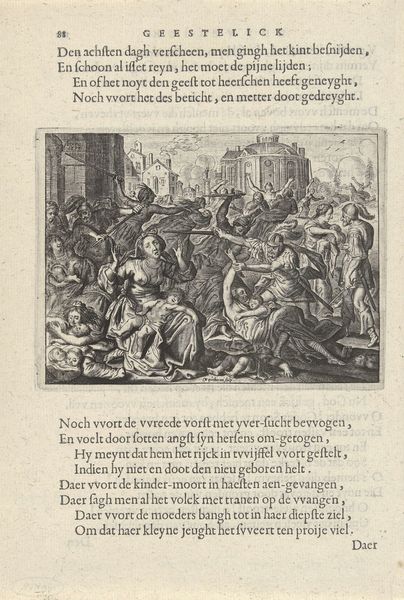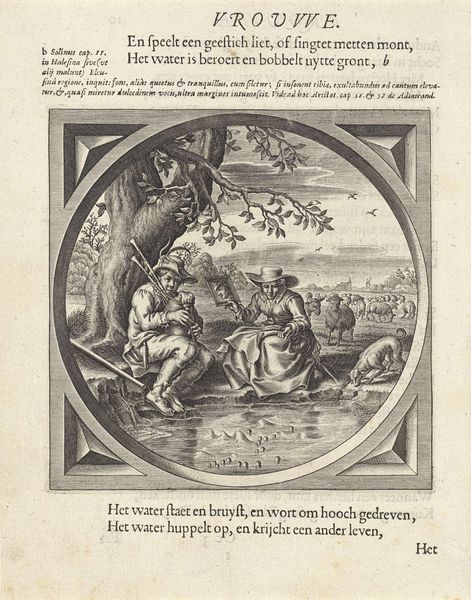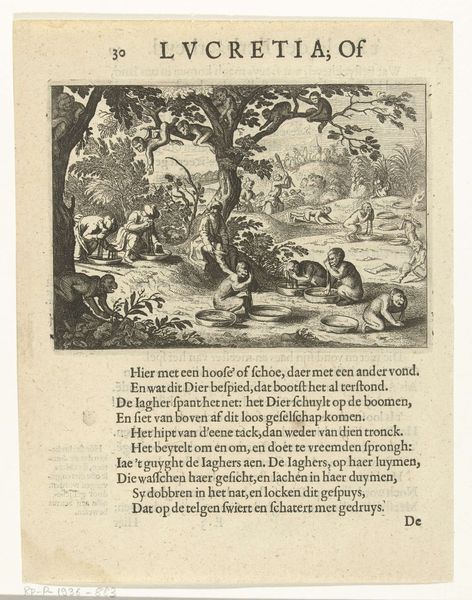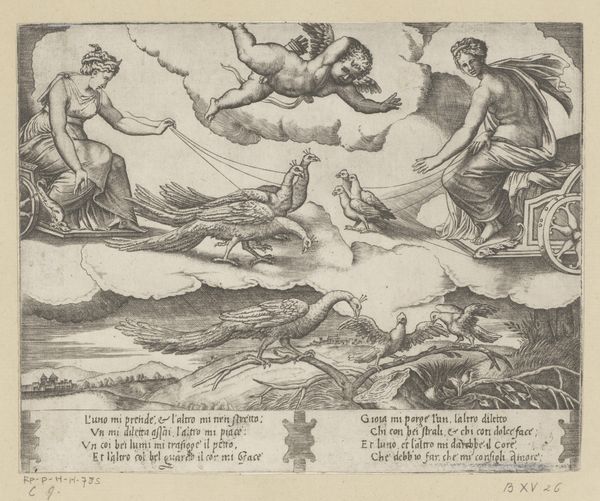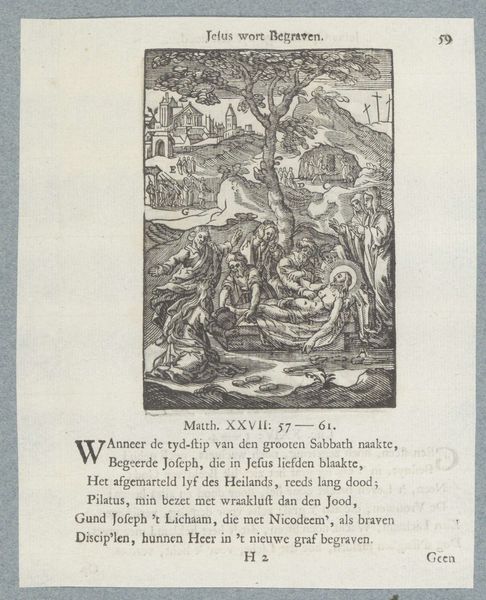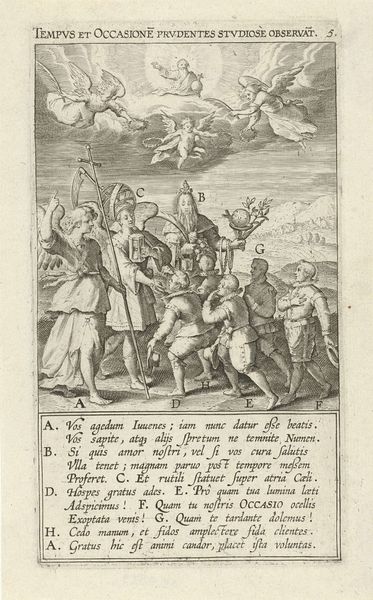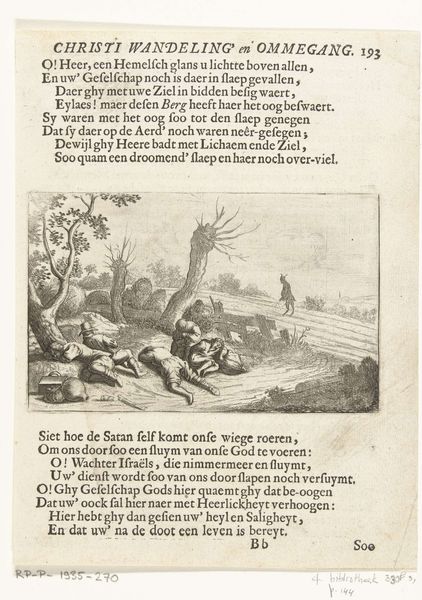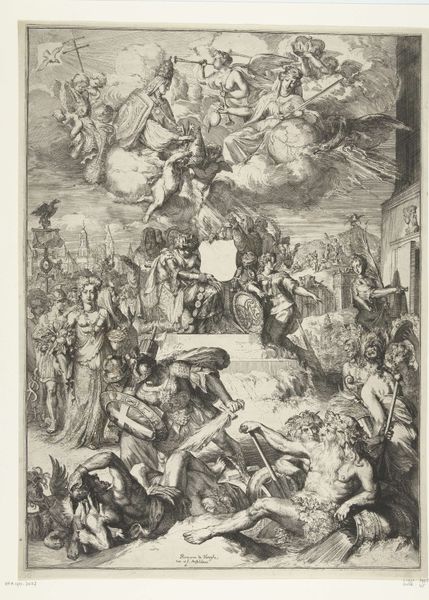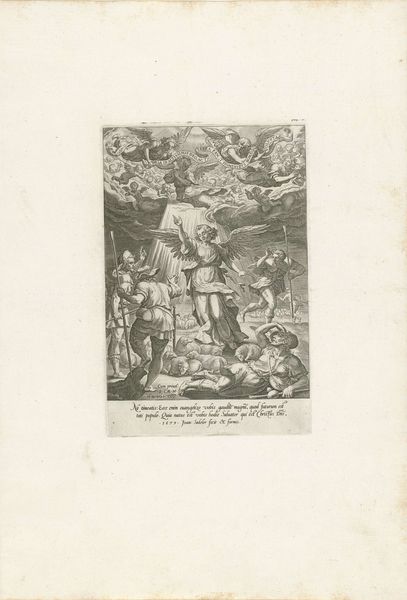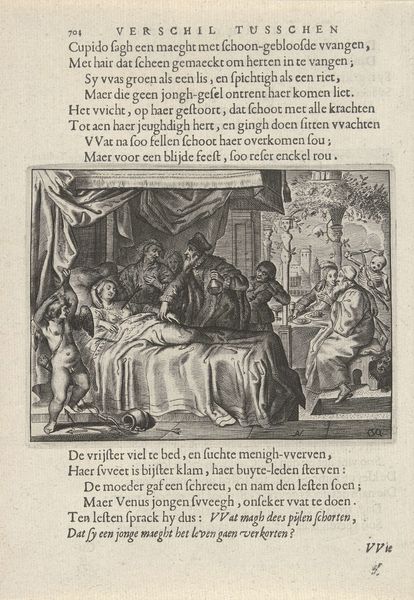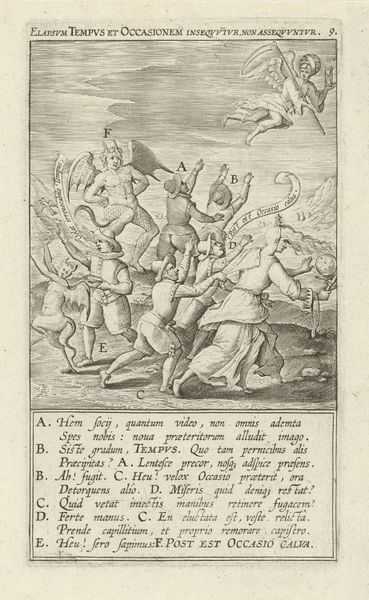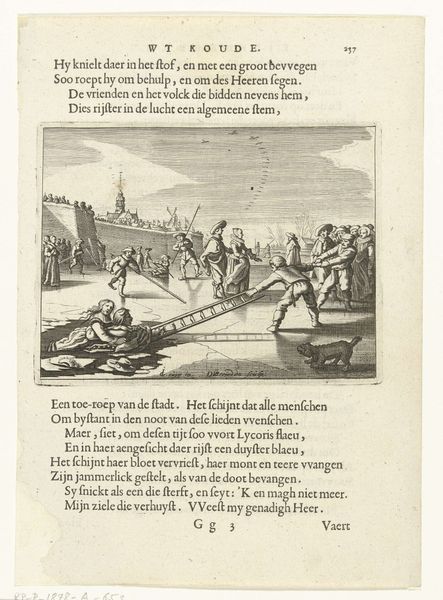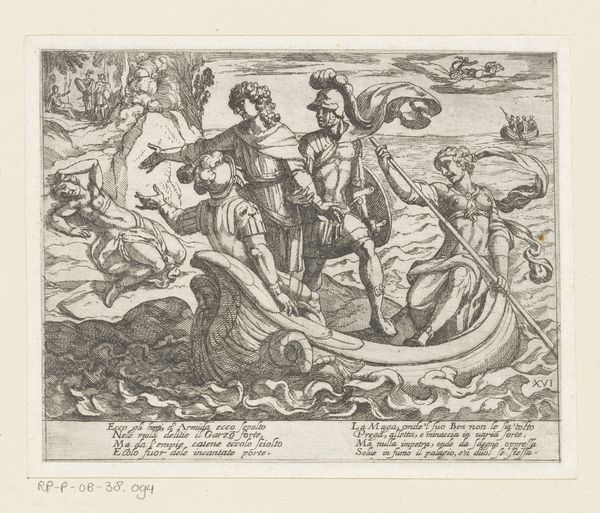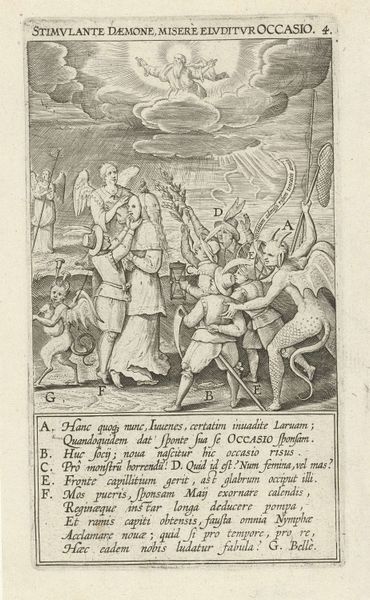
drawing, print, paper, engraving
#
drawing
#
baroque
# print
#
figuration
#
paper
#
history-painting
#
engraving
Dimensions: height 102 mm, width 142 mm
Copyright: Rijks Museum: Open Domain
Editor: Here we have Crispijn van den Queborn’s 1637 engraving, "Moses Showing the Copper Serpent," currently housed at the Rijksmuseum. The chaotic arrangement of figures, contrasted against the rather rigid text above and below, makes it a little difficult to engage with at first glance. What do you see in this piece? Curator: For me, it's about understanding the socio-political climate. The image depicts a biblical story, but during the Baroque period, representations of biblical events served as allegories for contemporary social issues. The plague of serpents could represent disease, or perhaps a moral corruption afflicting society. Considering the prevalence of religious conflict in the 17th century, what might this image say about religious salvation being offered to a 'poisoned' community? Editor: So the "poison" would refer to the people's sins and Moses displaying the serpent becomes a path to redemption. But why a serpent—given its often negative symbolism? Curator: Precisely. However, here the serpent is complex. In the text we see death is a product of the serpents, yet its image, raised on a pole, becomes a source of healing. There’s a tension here which requires some unpacking in terms of intersectional dynamics. Where do you see this ambiguity reflected in the piece? Editor: I guess it’s there in the reactions of the people—some seem desperate, while others appear almost indifferent to Moses' intervention. The engraving really visualizes a spectrum of responses. Curator: Exactly. The artist is not merely illustrating a Bible passage. He is using it to explore different responses to a crisis of faith, in the face of overwhelming challenges, and what we consider "spiritual healing". Looking at it this way, do you see any other relevant issues beyond just 17th-century issues? Editor: Absolutely. There are several angles through which we could interpret this image when we consider contemporary concerns around medical inequity, or lack of trust towards governmental and scientific authorities! Curator: Yes, the piece remains powerfully relevant and demonstrates how visual representation can speak to diverse social strata across centuries!
Comments
No comments
Be the first to comment and join the conversation on the ultimate creative platform.
